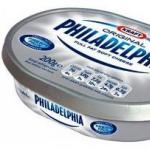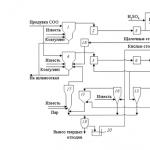If a company uses vehicles in its commercial activities, this implies the need to purchase fuels and lubricants (fuels and lubricants). The task lies not only in their rational selection and purchase, but also in subsequent accounting. One of the accounting tools in this direction is a fuel card. This article is about how to ensure competent and rational tax and accounting of fuel cards.
Benefits of using fuel cards
A fuel card is a convenient type of payment used by both large enterprises and individuals. Ordinary citizens can also count on paying for fuel and oils using this plastic and receive various bonuses and cash back. In this regard, there is no need to expose yourself to danger by carrying a large amount of cash in your pocket. In addition, the card allows you to receive fuel and lubricants at a discount; its size depends on the specific conditions of the card and the type of gas station where refueling takes place. As for legal entities, they have obvious advantages of using this product:
- Full control of settlement measures for a certain amount of fuel at the enterprise. You can conduct observations online in your personal account. As a result, each management specialist can calculate how much fuel and money was spent by the driver.
- Convenient payment system. You can refuel using fuel cards at any gas station, and use the fuel that the car needs.
- Versatility in solving commercial and economic problems. Thanks to a modern calculation scheme, it is possible to provide a solution to any problems related to refueling.
- Economic benefit. The purchase of special plastic cards for fuel contributes to the return of value added tax and a complete reduction in the organization’s budget expenditure.
- Rationalization of production cost formation. The enterprise has the opportunity to include the price of fuel and lubricants in the calculation of the cost of the company's product units.
- Save money by receiving various discounts and bonuses. Currently, this aspect is more impressive than ever, which is due to the complexity of the economic situation in the country.
- Providing full information support from a personal manager. Assistance in obtaining fuel cards. At the same time, they are guaranteed for each company, as well as a professional approach on the part of the employees.
The main advantage of owning a company card is the ability to calculate money spent by an employee (for example, a driver) on fuel or other consumables. The report can be obtained in your personal account; it will contain information about when, where and to what extent the car tank was refilled. As a result, it will be impossible for the driver to hide expenses for fuel and lubricants, and the organization’s funds will not pass the cash register. The current trend is that an increasing number of enterprises are switching to non-cash payments with gas stations and other structures, so acquiring such a card will be really beneficial.
Features of obtaining plastic
In order to obtain this plastic card, you must contact a department specializing in the issuance and accounting of such cards in order to subsequently conclude an agreement. It is important to check that the list of documents includes an application containing a list of gas stations that provide refueling using the card. The amounts that were transferred to the fuel organization represent an advance payment for fuel. You should be prepared for the fact that a certain amount will be charged for the production of the card.
Subtleties of reflecting the purchase of a card in the accounting department of an enterprise
To correctly record transactions that involve accounting for gasoline using fuel cards, you must have an invoice on hand, and at the end of the month the prices are summed up with other expense items. As part of the posting, the following points are usually reflected:
- the money required to produce and purchase the card;
- value added tax and its amount;
- the cost of the card product written off as an expense.
As you can see from the listed features, an employee of the organization will receive not cash, but a card for payments at the gas station. However, maintaining accounting transactions is still desirable. Their organization can be carried out on the basis of a special accounting journal. This type of documentation does not have a unified form, but it is determined by each organization individually. The following points and operations may be reflected within this paper:
- the date when the representative received the company card;
- the date within which the plastic was returned to management;
- the make of the car that is not subject to refueling using the card product;
- car numbers issued by traffic police representatives;
- Full name and personal signature of the driver;
- other parameters taken into account directly by management.
General procedure for purchasing fuel and lubricants
The orders of magnitude are influenced by calculation options and types of fuel sales. The rules for the supply of fuel resources are regulated by special instructions. Thus, according to clause 7.1 of this document, the sale of petroleum products is carried out on the basis of agreements drawn up between the parties, or for cash.
Types and variations of non-cash payments for fuel and lubricants
Currently, if we consider strictly non-cash payments for fuel resources, we can highlight several of the most popular areas:
- special statements;
- registration coupons;
- plastic fuel cards.
The standards under consideration take place in clause 10 of Rules 1442, according to which payments for sold oil products are carried out.
Use of statements and accounting activities
All activities are recorded in contracts concluded between the seller (gas station) and the consumer (company). The fact of fuel supply is subject to reflection in the statement in Form No. 16NP. And the waybill available to the driver must contain information about the volume of fuel supplied and its brand. On the basis of legislative documents, consolidated statements of accounts are issued for each enterprise at least once a month. This paper contains information about the total price of materials based on specific brands.

Features of food supply using coupons
This is another common option for selling products. A coupon is a special document taken under certain conditions. It is a kind of confirmation of the right to purchase volumes of fuel and lubricants. Thus, a coupon is a type of documentation confirming the buyer’s authority to purchase fuel. It is stored at the gas station until it is used to fill the tank of the company's vehicle. A coupon is not a means of payment, but only proof of payment.

Fuel smart cards and the advantages of their use
These products are unique and are plastic that has a built-in chip (microprocessor). It displays information about some key points that are useful for the company’s commercial activities:
- the volume of petroleum products that can be sold at the gas station;
- There may also be other information for carrying out settlement activities.
In this regard, we can conclude that this plastic is only a technical accounting tool, and not a means of payment or a credit card.

Keeping records of fuel cards in the accounting department means simplifying the process of accounting activities and helps save time and money for the company’s management. Fuel cards are classified in two areas:
- cash products– they include information about the amount credited to the organization’s escrow account, and also allow you to purchase any brands of fuel and lubricants and related product items and services within the gas station in accordance with the money limit; traditionally, products are sold at market value, which is established at the time of refueling;
- liter elements– from these plastic products you can find out information about the number of liters of fuels and lubricants that are pre-paid by the organization, but the supply of fuels and lubricants is carried out not at the market price, but at the cost specified in the contract, such cards are classified by type of fuels and lubricants (A92, A95 gasoline, A95 Euro, diesel fuel).
As part of the agreement concluded between the parties, there is a requirement related to the use and storage of fuel cards, as well as the type of card, the conditions of the refueling process, the procedure for settlement activities, the spending limit, and the list of gas stations that can service this card. It also contains information about the moment at which the transfer of ownership occurred.
What are the accounting aspects
There is no specific procedure for accounting actions on cards. For example, accounting is carried out using accounts "Materials" - 10, "Cash" - 50, "Settlements with accountable persons" - 71. Experts believe that this accounting procedure is not entirely correct.. This is due to several factors:
- on the 10th account, cards may be subject to accounting under the element “other materials” as an inventory item, and according to the Accounting Regulations, these include assets used by the enterprise as means or objects of labor, which in themselves represent a certain value;
- on the 50th account, accounting is carried out under subaccount 50-3 “monetary documentation”, and the documents must give the right to receive a commodity item at the full nominal value, certify the right to purchase a service, and contain the amount possible to spend on the purchase of goods;
- on the 71st account, information is summarized that is associated with calculations based on the amounts issued for reporting, i.e., in fact, the employee does not receive any cash, therefore such accounting of fuel and lubricants on fuel cards also cannot be considered correct.
According to the general rules and regulations of the balance sheet, all costs associated with the purchase of inventories are included in the actual price at which inventories are taken into account. However, reusable fuel cards cannot be associated with any specific fuel shipment. The company can write off their cost based on PBU 10/99 as expenses associated with the classic type of activity.
Possible entries in accounting when purchasing fuel and lubricants
The entries and transactions described within the balance sheet during the accounting process for fuel purchases may look like this:
- transferring money to pay for a card for purchasing fuel – D60K51;
- assigning the cost of plastic to expenditure areas – D20 (26, 44) K60;
- D19K60 – operation displays the fact of accounting for value added tax on the price of cards;
- posting D68K19 implies the deduction of value added tax;
- D60(2)K51 – making an advance payment for goods at a gas station, in particular fuels and lubricants;
- D10-3K60-1 - the operation indicates that the fuel that was purchased has been accepted for accounting measures;
- D60-1K60-2 – prepayment for fuel resources is credited;
- D20 (44, 26) K10-3 – an operation characterizing the write-off of spent fuel.
These are the main entries drawn up when accounting for fuel costs using plastic cards. Thus, various errors and overuse of resources are excluded from the enterprise budget, thanks to the use of a system of fuel cards, which are subject to careful and detailed monitoring by managers. Proper use of such cards will ensure enormous savings and the absence of erroneous information in the framework of accounting.
Today, almost every institution has vehicles on its balance sheet. The main cost item for their maintenance is the cost of purchasing fuels and lubricants. In practice, non-cash payment for fuel and lubricants using plastic cards is becoming increasingly widespread. How to correctly reflect in accounting transactions for the acquisition and consumption of fuel and lubricants received using such cards, we will consider in the article.
The procedure for settlements with fuel suppliers using fuel cards is established in the contract. In it, the parties determine the limit of fuel that can be dispensed daily (per month), the amount of prepayment for gasoline and card servicing, as well as other conditions (for example, providing a discount, the procedure for reconciling payments). The contract also needs to indicate the brands of cars, their state registration numbers, and set a refueling limit for each car.
In addition to the cost of fuel, the contract provides for the production of a plastic card. The expenditure of funds for the production of plastic cards in accordance with the Instructions on the procedure for applying budget classification, approved by Order of the Ministry of Finance of Russia dated December 21, 2012 No. 171n, is reflected under subarticle 226 “Other work, services.”
It is recommended to keep direct records of the fuel cards themselves in off-balance sheet account 03 “Strict reporting forms”.
The validity of using this approach is confirmed by specialists of the financial department in Letter of the Ministry of Finance of Russia dated 06/03/2008 No. 02-14-10a/1611.
If fuel cards are provided by fuel and lubricants suppliers as part of the fulfillment of their obligations without charging any additional fees, they can be reflected in accounting in a conditional valuation: one form, one ruble (clause 337 of Instruction No. 157n). Also, the accounting of cards should be organized in the context of the persons responsible for their storage and issuance, and storage locations. If the agreement provides for the need for additional payment for the cost of producing fuel cards, then fuel cards can be accounted for at the cost of their production.
Payments for purchased fuel are made by transferring by the purchasing institution to the supplier's account a 100% prepayment of the ordered amount of fuel in accordance with the supplier's price list at the prices established on the date of invoice.
Every month, the fuel supplier provides the purchasing organization with an invoice, an acceptance certificate for the fuel sold, as well as a report (or register) of card transactions. The last document indicates when and how much fuel was purchased (data from gas stations).
Fuel is written off as expenses based on the waybill and the fuel seller's monthly report on receipt of gasoline at the gas station. At the end of the month, the accounting department checks the data from the supplier's report with the data from the advance reports of vehicle drivers and the gas station receipts attached to them, confirming the quantity, type of fuel, and cost received using a specific fuel card, as well as the date and time of refueling.
Let's look at how to correctly reflect transactions for the acquisition and consumption of fuel and lubricants received using fuel cards in the software "1C: Accounting of a Government Institution 8" using a specific example.
A budgetary municipal institution refills fuels and lubricants using a plastic card in the amount of 10,000 rubles. The fuel organization produces one plastic card in the amount of 500 rubles. (including VAT 76.27 rubles), which is transferred to the ownership of the institution in August 2013. To refuel the car, a fuel card was issued on September 1, 2013 to the car driver V.A. Maslov. At the end of the month, the driver provided advance reports confirming refueling using a plastic card in the amount of 10,000 rubles. All expenses are paid from the personal account of a budgetary institution opened with the Federal Treasury, at the expense of subsidies allocated for the implementation of state assignments. The activities of the institution are not subject to VAT in accordance with Art. 149 of the Tax Code of the Russian Federation.
| Contents of operation | accounting entry | Amount, rub. | |
|---|---|---|---|
| Debit | Credit | ||
| 1. The obligation is accepted at the time of conclusion of the contract | 4 506 10 340 4 506 10 226 |
4 502 11 340 4 502 11 226 |
10 000 500 |
|
The tabular part of the document “Accepted obligation” will be filled in automatically with data from the document “Schedule for financing the obligation” entered for this element of the directory “Agreements and other grounds for the emergence of obligations”:
|
|||
| 2. An advance payment has been made for the service of producing a plastic card. | 4 206 26 560 | 4 201 11 610 18.01 (226) |
500 |
|
|
|||
| 3. The costs of producing a plastic card are reflected | 4 109 61 226 | 4 302 26 730 | 500 |
|
|||
| 4. The advance payment transferred for the production of the fuel card has been offset (the posting will be generated automatically when posting the “Third Party Services” document) | 4 302 26 730 | 4 206 26 660 | 500 |
| 5. A monetary obligation has been accepted to pay the costs of producing plastic cards | 4 502 11 226 | 4 502 12 226 | 500 |
|
The Accepted Monetary Obligation document can be created directly from the Third Party Services document. To do this, you need to check the box on the “Monetary Obligations” tab:
|
|||
| 6. The institution received a fuel card | 03.1 (MOL-Accounting) | 1 | |
|
|||
| 7. A monetary obligation has been accepted to pay the costs of purchasing fuel and lubricants. | 4 502 11 340 | 4 502 12 340 | 10 000 |
|
|||
| 8. Advance payment was transferred to the fuel and lubricants supplier | 4 206 34 560 | 4 201 11 610 18.01 (340) |
10 000 |
|
|||
| 9. Fuel card issued to the driver | 03.1 (MOL - Automotive fleet) | 03.1 (MOL-Accounting) | 1 |
|
|||
| 10. The amount of fuel and lubricants dispensed during refueling was taken into account based on the supplier’s report, verified with the drivers’ data | 4 105 33 340 | 4 302 34 730 | 10 000 |
|
|||
| 11. The advance payment transferred for fuel and lubricants has been offset | 4 302 34 830 | 4 206 34 660 | 10 000 |
| 12. Used gasoline is written off based on the data from the waybill | 4 109 61 272 | 4 105 33 440 | 10 000 |
|
|||
VAT – 18 rubles). The card is intended for refueling a car that is simultaneously used in two types of activities. The organization’s accounting policy states that general business expenses are distributed in proportion to income for each month of the reporting (tax) period. To distribute the costs of purchasing a fuel card between two types of activities, the Hermes accountant compared the income from wholesale trade with the total amount of income. The amount of income received by Hermes from various activities in May is:
- for wholesale trade (excluding VAT) – RUB 26,000,000;
- for retail trade – 12,000,000 rubles.
The organization did not carry out operations exempt from VAT. The share of income from wholesale trade in total income for May was: RUB 26,000,000. : (RUB 26,000,000 + RUB 12,000,000) = 0.684.
Accounting for expenses for the purchase of fuel cards in a budgetary and autonomous institution
Info
When paying for and receiving a fuel card, make the following entries in accounting: Debit 60 Credit 51 – the collateral value of the card was transferred to the fuel supplier; Debit 009 – reflects the issued collateral; Debit 015 “Fuel cards” – the fuel card is accepted as balance. When returning the card to the issuer: Debit 51 Credit 60 – the collateral value of the fuel card has been received; Loan 009 – the issued collateral has been written off; Credit 015 “Fuel cards” – the fuel card is written off from off-balance sheet accounting.
Accounting: purchasing a card for a fee In this case, the cost of a fuel card (less VAT) can be immediately written off as expenses (clause 5 of PBU 10/99). Record the VAT amount separately on account 19 “VAT on purchased assets.”
To control, consider the cost of the card along with the balance. For example, on account 015 “Fuel cards”.
Gasoline accounting using a fuel card in 1c accounting
Instructions N 162n in the budget accounting of a government institution in the situation under consideration, the following accounting entries can be made: 1) Debit KRB 1 206 34 560 Credit KRB 1 304 05 340 - an advance was transferred to the fuel supplier; 2) Debit KRB 1 105 33 340 Credit KRB 1 302 34,730 - based on the driver’s report, fuel dispensed at the gas station was credited;3) Debit KRB 1,401 20,272 Credit KRB 1,105 33,440 - based on waybills, consumed fuel was written off;4) Debit KRB 1,302 34,830 Credit KRB 1,206 34 660 - the advance payment for fuel previously transferred to the supplier was offset; 5) Debit KRB 1,302 34,830 Credit KRB 1,304 05,340 - based on the results of the period stipulated by the contract, the final settlement was made with the fuel supplier.2. From the contents of paragraph.
How to take into account fuel cards in the budget and reports of enterprises
- Fill in the “From” and “Invoice No.” fields and register the document.
- Fill in the “Received” field, indicating the date the document was received by the buyer.
- Specify the basis document.
- Check the “Reflect deduction” box.
- Select the appropriate method of receipt and record the document. The result of the above actions is shown in Fig. 9. In order to save data on fuel cards, you can organize accounting of these cards in account 006.
In order to accept a fuel card for off-balance sheet accounting for this account, you must create a “Transaction” document. This is done in the following order (see.
Instructions N 157n, letter of the Ministry of Finance of Russia dated November 27, 2014 N 02-07-10/60399). The accounting policy of a state institution may provide for a requirement to account for fuel cards at the cost of their acquisition (manufacturing) (clause 337 of Instructions N 157n). Accounting for such cards can be organized by persons responsible for their use.
Important
In this case, cards stored in the institution’s cash desk should be taken into account separately. In addition, as an additional analytical indicator for accounting for fuel cards, a monetary expression of the volume of rights to receive petroleum products provided under this card may be provided.
The agreement was concluded with the issuance of a fuel card through which payments will be made. The list of transactions on this card, as well as the car driver’s waybill, are taken into account by the organization - accordingly, the cost of fuel purchased with this card must also be taken into account.
Currently, income tax does not take into account the costs of purchasing fuel and lubricants. The actual expenses correspond to the standards established for this particular company by order of its general director. Information on how information about the purchase of fuels and lubricants using a fuel card can be reflected in the 1C Accounting 8 product is given in the material from the Directory of Business Operations. Transferring payment to the supplier for fuel and lubricants and fuel cards. Drawing up a payment order for payment for fuel and lubricants and a fuel card is carried out as follows (see.
rice.
Register your fuel card in 1C government agencies
Fuel cards also do not meet this requirement. The costs associated with the purchase of fuel cards can be regarded as additional costs for the purchase of fuel, that is, included in the cost of gasoline purchased using them.
A similar accounting procedure is proposed, in particular, in the Sectoral Features of Budget Accounting in the Healthcare System of the Russian Federation, approved by the Ministry of Health and Social Development of the Russian Federation. At the same time, the Russian Ministry of Finance proposes to reflect the cost of fuel cards in the manner established for strict reporting documents.
That is, they are recorded in off-balance sheet account 03 “Strict reporting forms”. The cost of producing the card is reflected in the current expenses of the institution and is paid through Article 226 “Other works, services” of KOSGU.
The specific accounting procedure for fuel cards can be determined as an element of the institution’s accounting policy.
- Click “Create” and “Add” to create a new transaction.
- Select account 006 (field “Debit”) and indicate how many fuel cards should be taken into account.
- Fill in the “Amount” field at the rate of “one fuel card – 1 ruble”.
- Record the document and close it. Accounting for fuels and lubricants To account for fuels and lubricants purchased using fuel cards, you must perform the following operations:
Go to the “Operations” menu and select “Manually entered operations”.
- Go to the “Purchases” menu and select “Receipts”, operation “goods”.
- Fill in information about the agreement with the counterparty.
- In the “Nomenclature” section, indicate the name of the fuel.
- Fill in the other fields (see Fig. 11) and save the document.
The result is shown in Fig. 12. In order to accept VAT for deduction, you must generate the received invoice (see.
According to the accounting policy of the institution, the cost of fuel cards is included in the cost of purchasing fuel. Situation 1 According to the terms of the agreement with the supplier of petroleum products, ownership of the fuel passes to the institution at the time of its collection (refueling the car).
In this case, fuel is sold at retail prices in effect at that moment. On the day of refueling the car, the cost of fuel was 37.76 rubles/l (including VAT - 5.76 rubles). Operations for purchasing a card, sampling and writing off gasoline are reflected in the institution’s accounting records (to simplify the example, off-balance sheet accounting of the institution’s funds is not given): Debit 4,106 34,340 Credit 4,302 26,730 – 944 rubles. - the costs of purchasing a fuel card and accounts payable to the supplier are reflected (including “input” VAT); Debit 4,302 26,830 Credit 4,201 11,610 – 944 rub.
Accounting for gasoline using a fuel card in 1C Accounting 05.05.2016 Accounting for the purchase of gasoline using a fuel card in the 1C Accounting program 8 (edition 3.0) The purchase of gasoline and diesel fuel at gas stations is possible both by cash or non-cash payment, and by fuel card. A fuel card is a plastic card with a microprocessor built into it.
This microprocessor, or chip, stores information about the limit of funds allocated for the purchase of fuels and lubricants and related services at gas stations. In addition, data about the range of fuels and lubricants of a particular fuel company and data about the services that this company provides are recorded in the chip.
In the 1C Accounting 8 program, it is possible to take into account the purchase of fuel and lubricants using fuel cards. In particular, the following example can be given. A certain company that owns a car enters into an agreement with a fuel company that supplies fuel and lubricants.
Thus, the card may be blocked if timely payment is not made and fuel will not be released upon presentation. As a result, the principle of unconditionality of a monetary document is violated.
In addition, the fuel card does not have a face value, that is, the cost for which you can purchase fuel. In essence, this is a technical device issued to drivers for dispensing petroleum products at gas stations.
When issuing a fuel card, no money is actually transferred to an employee of the organization. Therefore, to reflect these transactions, the use of accounts 0 201 00 000 “Cash” (analytical account 0 201 35 000 “Cash documents”) and 0 208 00 000 “Settlements with accountable persons” is unjustified. It is also not entirely legal to take fuel cards into account in account 0 105 00 000 “Inventory”. Non-financial assets must have value in themselves or be used by the organization as objects of labor.
- liter (issued for a certain limit on the volume of fuel and lubricants).
Advice: in the context of constantly rising prices for fuel and lubricants, purchase liter fuel cards. This is more profitable, since the organization pays for a predetermined amount of fuel at the price in effect on the date of invoice. Until the organization selects the entire volume of fuel and lubricants according to the received card, a possible increase in fuel prices will not affect it. How to get a fuel card To purchase fuels and lubricants using fuel cards, you need to enter into an agreement with a wholesale supplier or directly with a gas station. Typically, the scheme for working with fuel cards looks like this. 1.
Gasoline accounting using a fuel card in 1c accounting
In general, the accounting scheme consists of the following points:
- Posting a fuel card
- Posting of gasoline received using a fuel card
- Write-off of expenses.
The capitalization of the cost of a fuel card can be recorded as a receipt of service - see.
Fig.11 and Fig.12. And the card itself is accounted for in account 006 by a manual operation (Fig. 13) Fig. 11 Fig. 12 Fig. 13 Receipt of fuel is documented in the document “Receipt of goods, services” (see.
Fig.14, Fig.15). Fig. 14 Fig. 15 Write-off of fuel and lubricants in 1C 8.3 Write-off of gasoline and other fuels and lubricants is documented in the same way for all options for accounting for fuel and lubricants using the document “Requirement-waybill” (Fig. 16, Fig. 17).
Fig. 16 Fig. 17 The cost of gasoline written off as expenses is taken into account at the average.
In conclusion, a little advice on how to write off fuel and lubricants using waybills for each vehicle.
400 bad request
Waybills in 1C 8.3 accounting - writing off fuel and lubricants using fuel cards
Fig.5 Get 267 video lessons on 1C for free:
- Free video tutorial on 1C Accounting 8.3 and 8.2;
- Tutorial on the new version of 1C ZUP 3.0;
- Good course on 1C Trade Management 11.
Fig.6 The issuance of coupons is documented in the document “Issue of monetary documents”, which is also located in the “Bank and cash desk” section (see.
Fig.7 and Fig.8).
Important
Fig.7 Fig.8 Used coupons are taken into account in the “Advance report” document (see.
Fig.9 and Fig.10). Fig.9 Fig.10 Used gasoline is written off to cost accounts using the “Demand-invoice” document, as in the first point. The waybill can also be called as an external report from the “Additional reports and processing” directory.
Write-off of fuel and lubricants using fuel cards Unlike coupons, fuel cards are not accounted as monetary documents, but as strict reporting forms on off-balance sheet account 006.
Typical situations
Accounting for gasoline using a fuel card in 1C Accounting 05.05.2016 Accounting for the purchase of gasoline using a fuel card in the 1C Accounting program 8 (edition 3.0) The purchase of gasoline and diesel fuel at gas stations is possible both by cash or non-cash payment, and by fuel card.
A fuel card is a plastic card with a microprocessor built into it.
This microprocessor, or chip, stores information about the limit of funds allocated for the purchase of fuels and lubricants and related services at gas stations.
In addition, data about the range of fuels and lubricants of a particular fuel company and data about the services that this company provides are recorded in the chip.
In the 1C Accounting 8 program, it is possible to take into account the purchase of fuel and lubricants using fuel cards.
In particular, the following example can be given. A certain company that owns a car enters into an agreement with a fuel company that supplies fuel and lubricants.
To continue working, get demo access or log in
- Fill in the “Received” field.
- Specify the basis document.
- Check the “Reflect deduction” box.
- Select the appropriate receiving method and save the document. The result is shown in Fig. 14.
Fill in the “From” and “Invoice No.” fields and register the document.
Accounting for the cost of consumed fuels and lubricants To account for the cost of consumed fuels and lubricants, the following actions should be performed (see.
Accounting for fuel and lubricants using fuel cards
Accounting for fuel and lubricants according to advance reports The accounting scheme is as follows:
- Issuing cash to an accountant
- Preparation of an advance report
- Cash back to the cashier
- Write-off of costs for fuel and lubricants using fuel cards
Figure 1 shows an advance report, which reflects several operations at once: a report on the advance payment issued, the receipt of gasoline to the warehouse, information on the invoice (if there is one). Fig. 1 In Fig. 2 you can see the document postings. In order for accounting accounts for the “AI-92 Gasoline” item to be filled in automatically, you need to add a line for the “Fuels and Lubricants” group in the information register “Item Accounting Accounts” (see Fig. 3) Fig. 2 Fig. 3 The printed form of the waybill can be connected as external report or processing in the directory “Additional reports and processing” (see Fig. 4).
The report itself will have to be ordered from specialists or purchased from Infostart.
Postings for the purchase of fuel and lubricants using fuel cards in accounting
Fuel cards for employees" 006 "Fuel cards for employees" Internal movements of strict reporting forms in the company Supporting primary documents by changing the responsible person (or) storage location 14.
006 “Fuel cards at MOL” Write-off of fuel cards from the register of the financially responsible person In case of its loss or termination of the contract with the fuel company 15. 10.03 warehouse (car tank No.) 10.03 warehouse (personal account in the tank) Internal movement of fuel into vehicle tanks funds Report from the fuel company on the card, provided at the end of the month. Drivers' checks, if not lost. 09/30/2016 16. 20,26,46 10.03 The consumed fuel for each car was written off. Waybill, accounting certificate, Request-invoice 09/30/2016. 17. 91.2 10.03
Fuel consumption was written off above normal. The accounting certificate dated September 30, 2016 is not accepted for tax accounting.
The agreement was concluded with the issuance of a fuel card through which payments will be made.
The list of transactions on this card, as well as the car driver’s waybill, are taken into account by the organization - accordingly, the cost of fuel purchased with this card must also be taken into account.
Currently, income tax does not take into account the costs of purchasing fuel and lubricants.
The actual expenses correspond to the standards established for this particular company by order of its general director. Information on how information about the purchase of fuels and lubricants using a fuel card can be reflected in the 1C Accounting 8 product is given in the material from the Directory of Business Operations. Transferring payment to the supplier for fuel and lubricants and fuel cards. Drawing up a payment order for payment for fuel and lubricants and a fuel card is carried out as follows (see Fig.
VAT on fuel can be deducted when:
- The fuel has been registered;
- There is an invoice filled out in accordance with the law;
- The fuel is intended for operations subject to VAT.
Wiring No. 11.
There are different opinions on which off-balance account to account for fuel cards.
There is no approved accounting procedure for fuel cards, so in practice various options are used.
A fuel card is a kind of information carrier, since the card contains technical information about types of fuel and established daily limits (in liters or rubles). In fact, fuel cards are used as a means of strict accountability, allowing their holder to receive a certain amount of petroleum products on behalf of the buyer.
Expenses for fuel and lubricants (purchase of a fuel card) related to one type of activity of the organization do not need to be distributed. Distribute the VAT amount allocated in the invoice according to the methodology established in paragraphs 4 and 4.1 of Article 170 of the Tax Code of the Russian Federation.
The amount of VAT that cannot be deducted should be added to the resulting amount of expenses for the activities of the organization subject to UTII (subclause
3 p. 2 art. 170
Tax Code of the Russian Federation). Example of fuel card cost distribution.
The organization applies a general taxation system and pays UTII. LLC Trading Company Hermes sells goods wholesale and retail.
For wholesale operations, the organization applies the general taxation system (income tax is calculated monthly) and pays VAT.
Hermes concluded an agreement with the gas station for servicing a liter fuel card.
The cost of the card is 118 rubles. (incl.
- 1 Types of fuel cards
- 2 How to apply for a fuel card
- 3 Fuel card logbook
- 4 Accounting: getting a card for free
- 5 Accounting: acquisition with return condition
- 6 Accounting: purchasing a card for a fee
- 7 BASIC
- 8 USN
- 9 UTII
- 10 OSNO and UTII
Purchasing a fuel card (smart card) is one of the ways to supply an organization with fuels and lubricants.
In addition, the organization can purchase fuel:
- by coupons;
- in cash.
Before choosing one or another method of purchasing fuel and lubricants, evaluate the pros and cons of each of them.
Fuel cards are:
- cash (issued for a certain limit on the cost of fuel and lubricants);
- liter (issued for a certain limit on the volume of fuel and lubricants).
Advice: in the context of constantly rising prices for fuel and lubricants, purchase liter fuel cards. This is more profitable, since the organization pays for a predetermined amount of fuel at the price in effect on the date of invoice. Until the organization selects the entire volume of fuel and lubricants according to the received card, a possible increase in fuel prices will not affect it.
How to apply for a fuel card
To purchase fuels and lubricants using fuel cards, you need to enter into an agreement with a wholesale supplier or directly with a gas station.
Typically, the scheme for working with fuel cards looks like this.
1. The organization transfers a 100% prepayment to the supplier, which includes the cost of fuel, the price of the card itself (if the card is transferred to the organization for a fee) and the cost of its maintenance. Some oil companies issue cards for free and do not charge fees for their service. Others charge a small fee. At the same time, the cost of gasoline purchased with a card is usually lower than when paying with coupons and cash.
2. After the organization has transferred the advance, it is given a fuel card with a pin code. When the driver fills up the car, he presents the card at the gas station.
3. Every month, after processing the data, the fuel supplier (card issuer) provides the purchasing organization with:
- invoice;
- acceptance certificate, which indicates the volume and cost of the selected fuel;
- a detailed report on all transactions on the fuel card. It includes information about the receipt and expenditure of funds, as well as the amount of fuel and lubricants supplied.
Fuel card logbook
As a rule, a fuel card is assigned to a specific employee (driver). For control, you can create a log of receipt and issuance of fuel cards. There is no standard form for this document, so the organization has the right to develop it independently. The procedure for issuing and returning fuel cards is not regulated. In practice, you can oblige an employee to hand over the card either daily or if necessary (at the end of its validity period, upon dismissal, when going on vacation, etc.). There is no need to prepare advance reports when paying for fuel using fuel cards.
The accounting procedure for fuel cards depends on the terms of the agreement with the fuel supplier.
Accounting: getting a card for free
In this case, there is no need to reflect the card in accounting. Only property received free of charge is accepted for accounting, which can subsequently be sold and receive income (clause 9 of PBU 5/01). It is impossible to sell a fuel card, since it is assigned to a specific organization.
Accounting: acquisition with return condition
In this case, the organization must pay the supplier the collateral value of the card. When the card is no longer used, the organization will return it and the supplier will return the security deposit. Since the fuel card is the property of the fuel supplier, such property must be taken into account separately from the organization’s own property (clause 5 of PBU 1/2008). Therefore, in accounting, reflect the received card on an off-balance sheet account in a conditional valuation. For fuel cards, you can open an additional sub-account, for example, 015 “Fuel cards”.
When paying for and receiving a fuel card, make the following entries in accounting:
Debit 60 Credit 51
- the deposit value of the card is transferred to the fuel supplier;
Debit 009
- the issued collateral is reflected;
Debit 015 “Fuel cards”
- the fuel card is accepted as balance.
When returning the card to the issuer:
Debit 51 Credit 60
- the deposit value of the fuel card was received;
Credit 009
- the issued collateral is written off;
Credit 015 “Fuel cards”
- the fuel card is written off from off-balance sheet accounting.
Accounting: purchasing a card for a fee
In this case, the cost of the fuel card (less VAT) can be immediately written off as expenses (clause 5 of PBU 10/99). Record the VAT amount separately on account 19 “VAT on purchased assets.” To control, consider the cost of the card along with the balance. For example, on account 015 “Fuel cards”. In addition, for more detailed control, it is advisable to reflect the receipt and movement of fuel cards in the logbook for the receipt and issue of fuel cards.
Make entries in your accounting:
Debit 60 Credit 51
- paid fuel card;
Debit 20 (23, 26, 44...) Credit 60
- the cost of the fuel card is written off as expenses;
Debit 19 Credit 60
- VAT is reflected on the cost of the purchased card;
Debit 015 “Fuel cards”
- fuel card is taken into account;
- accepted for deduction of input VAT on the purchased fuel card.
Tax accounting for fuel cards depends on the conditions under which the supplier provides them (free of charge, on bail, for a fee), as well as on the taxation system that the organization applies.
BASIC
If the supplier provides the card free of charge, there is no need to reflect this transaction in tax accounting. In this case, the organization does not have any economic benefit (income) (Article 41 of the Tax Code of the Russian Federation).
If the supplier pledges the card, its receipt and return are also not reflected in tax accounting. This follows from the provisions of subparagraph 2 of paragraph 1 of Article 251 and paragraph 49 of Article 270 of the Tax Code of the Russian Federation.
If the supplier provides a fuel card for a fee, then its cost can be included in other expenses (subclause 49, clause 1, article 264 of the Tax Code of the Russian Federation ).
An example of how to reflect the acquisition and write-off of a fuel card in accounting and taxation
On June 4, Alpha LLC entered into an agreement with the gas station for servicing a cash fuel card. On the same day, the fuel card was paid to the supplier from the organization’s current account. The cost of the card is 118 rubles. (including VAT - 18 rubles). On June 5, the card was issued to manager A.S. Kondratiev. On August 1, Kondratiev resigned and handed over the card. Both transactions were reflected in journal of receipt and issue of fuel cards .
The following entries were made in the organization's accounting.
Debit 60 Credit 51
- 118 rub. - paid fuel card;
Debit 26 Credit 60
- 100 rub. (118 rubles - 18 rubles) - the cost of the fuel card was expensed;
Debit 19 Credit 60
- 18 rub. - VAT is reflected on the cost of the fuel card;
Debit 015 “Fuel cards”
- 118 rub. - fuel card is taken into account;
Debit 68 subaccount “VAT calculations” Credit 19
- 18 rub. - accepted for deduction of input VAT on the fuel card.
When calculating income tax for January-June, Alpha's accountant included the cost of a fuel card (100 rubles) as an expense.
Input VAT in the amount of 18 rubles. presented for deduction from the budget in the second quarter.
simplified tax system
If the supplier provides the card free of charge, there is no need to reflect this transaction in the income and expenses ledger. In this case, the organization does not have any economic benefit (income) (Article 41 of the Tax Code of the Russian Federation).
If the supplier pledges the card, its receipt and return are also not reflected in the accounting book (clause 1 of Article 346.15, subclause 2 of clause 1 of Article 251, Article 346.16 of the Tax Code of the Russian Federation).
Situation: is it possible to include in expenses the cost of a fuel card provided for a fee when calculating a single tax? The organization applies a simplification and pays a single tax on the difference between income and expenses.
Yes, you can.
The list of expenses for the maintenance of official vehicles, given in subparagraph 12 of paragraph 1 of Article 346.16 of the Tax Code of the Russian Federation, is open. However:
- such expenses must be economically justified and documented;
- a company car must be used by the organization in activities aimed at generating income.
If these conditions are met, the organization has the right to include the cost of the fuel card in expenses when calculating the single tax. A similar point of view is reflected in the letter of the Ministry of Finance of Russia dated June 22, 2004 No. 03-02-05/2/40.
UTII
The object of UTII taxation is imputed income (clause 1 of Article 346.29 of the Tax Code of the Russian Federation). Therefore, the cost of purchasing a fuel card does not affect the calculation of the tax base.
OSNO and UTII
If expenses for fuel and lubricants (purchase of a fuel card) simultaneously relate to the activities of an organization subject to UTII and activities under the general taxation system, then such expenses must bedistribute (Clause 9 of Article 274 of the Tax Code of the Russian Federation). Expenses for fuel and lubricants (purchase of a fuel card) related to one type of activity of the organization do not need to be distributed.
The VAT amount allocated in the invoice isdistribute according to the methodology established in paragraphs 4 and 4.1 of Article 170 of the Tax Code of the Russian Federation.
The amount of VAT that cannot be deducted should be added to the resulting amount of expenses for the activities of the organization subject to UTII (subclause 3, clause 2, article 170 of the Tax Code of the Russian Federation).
Example of fuel card cost distribution. The organization applies a general taxation system and pays UTII
LLC "Trading Company "Hermes"" sells goods wholesale and retail. For wholesale operations, the organization applies the general taxation system (income tax is calculated monthly) and pays VAT. In the city where Hermes operates, retail trade has been transferred to UTII.
On May 4, Hermes entered into an agreement with the gas station to service a liter fuel card. The cost of the card is 118 rubles. (including VAT - 18 rubles). The card is intended for refueling a car that is used in two types of activities at the same time.
The accounting policy of the organization states that general business expenses are distributed in proportion to income for each month of the reporting (tax) period. To distribute the costs of purchasing a fuel card between two types of activities, the Hermes accountant compared the income from wholesale trade with the total amount of income.
The amount of income received by Hermes from various activities in May is:
- for wholesale trade (excluding VAT) - 26,000,000 rubles;
- for retail trade - 12,000,000 rubles.
The organization did not carry out operations exempt from VAT.
The share of income from wholesale trade in total income for May was:
26,000,000 rub. : (RUB 26,000,000 + RUB 12,000,000) = 0.684.
The organization’s activities under the general taxation system include expenses for the purchase of a fuel card in the amount of:
(118 rub. - 18 rub.) × 0.684 = 68 rub.
When calculating income tax for May, the Hermes accountant took into account the costs of purchasing a fuel card in the amount of 68 rubles. The amount of VAT that can be deducted can be determined by the Hermes accountant based on the results of the second quarter.
For information on how to write off fuels and lubricants purchased using fuel cards, see How to record the purchase of fuel and lubricants using fuel cards .






























